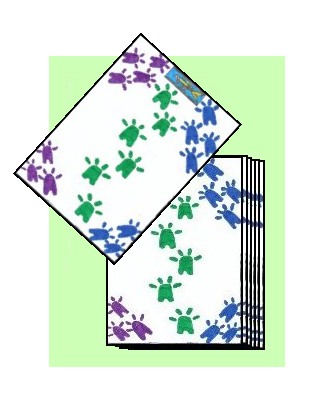 What is the Deal?:
What is the Deal?:"Dealing" is the process of disseminating the cards, in proper turn, to each active player in the game in a specific, orderly manner. This is usually performed in a series of rounds or rotations in which each player in turn is provided with one or more cards face down from the top of the deck. Each round usually consists of the distribution of one such card to each player, however in some games multiple cards might be distributed to the individual players during each rotation. The dealer continues these rotations around the table until each player has the requisite number of cards for the game or hand to be played. These cards are usually slid or tossed face down in front of each player. This should be done in such a manner that no player, including the one receiving the dealt cards or the dealer himself, is able to see the face of any card distributed. In most games each individual player usually receives the same specific number of cards as prescribed by the particular game being played, however in some games certain players may receive more or less.
Dealing is usually the last task before the actual play of the hand begins, after other pre-game tasks are accomplished (such as selection of seats, dealer selection, shuffling and cutting the deck).
The specific direction (clockwise or counterclockwise) in which the actual cards are dealt is usually determined by the game being played or the geographical location in which you are playing the game. See the section Direction of card distribution and direction of play of the hand below for more information.
The Basic Deal:
Although many individual games prescribe a specific method of dealing for that particular game, there are some standard procedures which are used in just about any game.
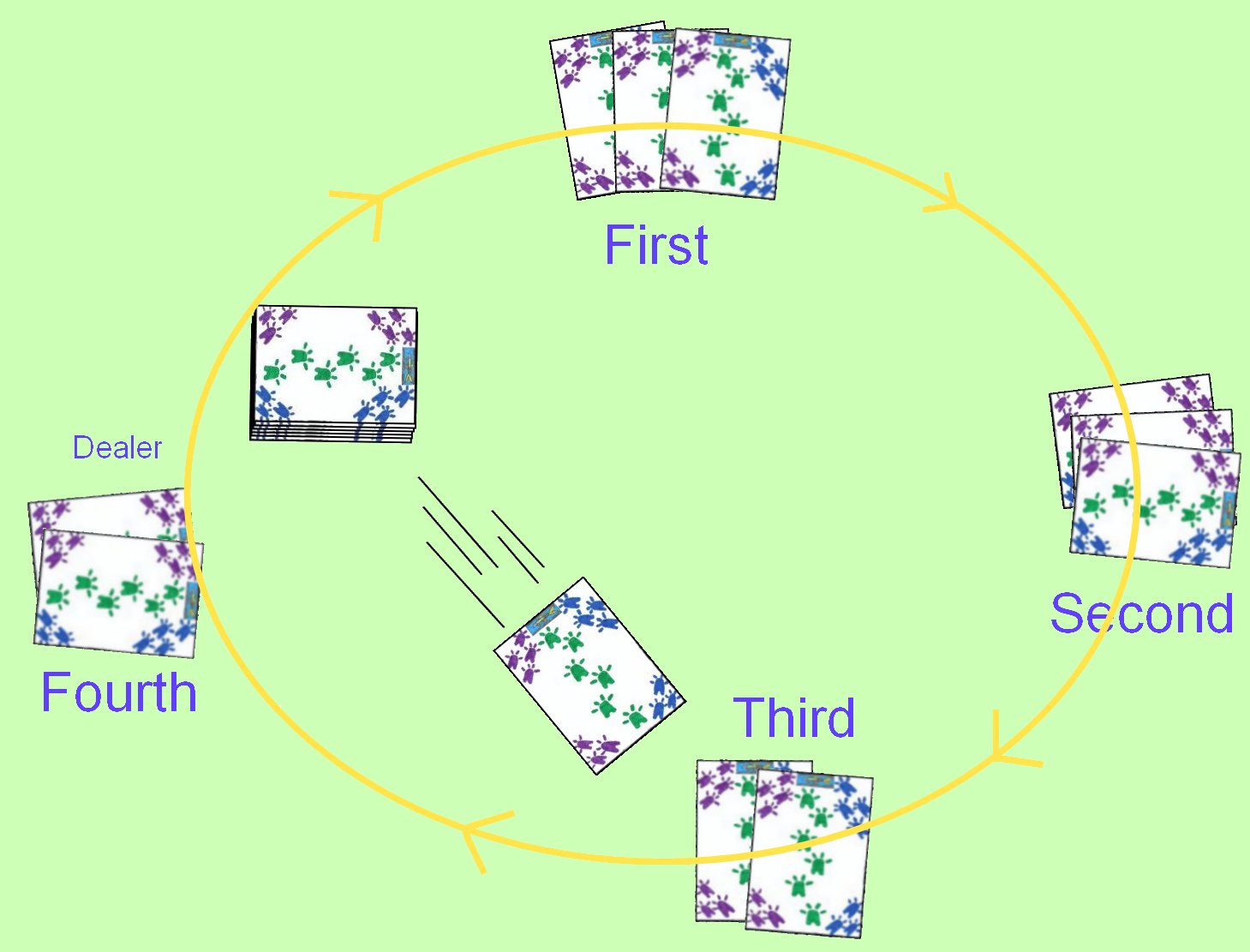 The following procedures describe the basic deal using a clockwise rotation of the cards (see below regarding locales and games that use a counterclockwise rotation) although the process would be identical in all aspects with a counterclockwise deal save the direction of the card distribution. The deal usually occurs after the dealer shuffles and the player to his immediate right cuts the deck.
At this point the appointed dealer for the game or hand would pick up the deck and hold it firmly in their left hand. The bottom of the deck should be held flat against the palm in such a manner that no player (including the active dealer) is able to view the face of the bottom card in the deck. The thumb of the left hand should be on top of the deck and the other fingers along the right side of the deck.
This dealer would then, using the left thumb, slide the appropriate number of cards (usually just one) to be delivered to the first player from the top of the deck. Using the right hand the dealer would then take this card (or cards) with the right hand and toss them quickly to the targeted player. In some instances, if the surface of the table is smooth the cards can be slid onto the table and to the indicated player.
The dealer would use the thumb of his left hand to slide these cards from the deck, again ensuring no player can get a view of the face of any of these cards.
The following procedures describe the basic deal using a clockwise rotation of the cards (see below regarding locales and games that use a counterclockwise rotation) although the process would be identical in all aspects with a counterclockwise deal save the direction of the card distribution. The deal usually occurs after the dealer shuffles and the player to his immediate right cuts the deck.
At this point the appointed dealer for the game or hand would pick up the deck and hold it firmly in their left hand. The bottom of the deck should be held flat against the palm in such a manner that no player (including the active dealer) is able to view the face of the bottom card in the deck. The thumb of the left hand should be on top of the deck and the other fingers along the right side of the deck.
This dealer would then, using the left thumb, slide the appropriate number of cards (usually just one) to be delivered to the first player from the top of the deck. Using the right hand the dealer would then take this card (or cards) with the right hand and toss them quickly to the targeted player. In some instances, if the surface of the table is smooth the cards can be slid onto the table and to the indicated player.
The dealer would use the thumb of his left hand to slide these cards from the deck, again ensuring no player can get a view of the face of any of these cards.
When dealing the cards, the dealer should ensure that only the required number of cards for this specific rotation are delivered to each player. For the vast majority of games this would consist of only a single card being dealt to the players for each rotation of card distribution, but some games do specify a differing number of cards to be provided to each player in each cycle or rotation.
The first card or cards should be distributed to the first active player to the dealers immediate left. The next card or cards would then be distributed to the next player in turn in a clockwise rotation from the first player. This would continue until all active players have received the first card or cards for this rotation in the deal. If the dealer is also playing in the hand, he would receive his card, dealt directly in front of himself, last in the rotation. Each complete cycle of distributing one card or cards to each active player is called one round or rotation. Most deals consist of multiple rounds of card distribution, until each player has the required equal number of cards for a hand of the specific game being played. Thus, the dealer would then repeat this procedure around the table until each player had the appropriate number of cards for the hand or game being played.
At the completion of this card distribution, the dealer would then normally square up the remainder of the deck (if any cards remain in the deck) and place the stack near the center of the table. It is very important that the entire procedure be conducted in such a manner that none of the cards are exposed are otherwise seen by any of the players (including the dealer himself), unless the particular game calls for such exposure of certain cards.
Direction of Card Distribution and Direction of Play of the Hand:
The direction of the card distribution of the deal and the direction of play of the hand are closely linked. This is because, the order and direction of card distribution will be the same as that used in the play of the hand.
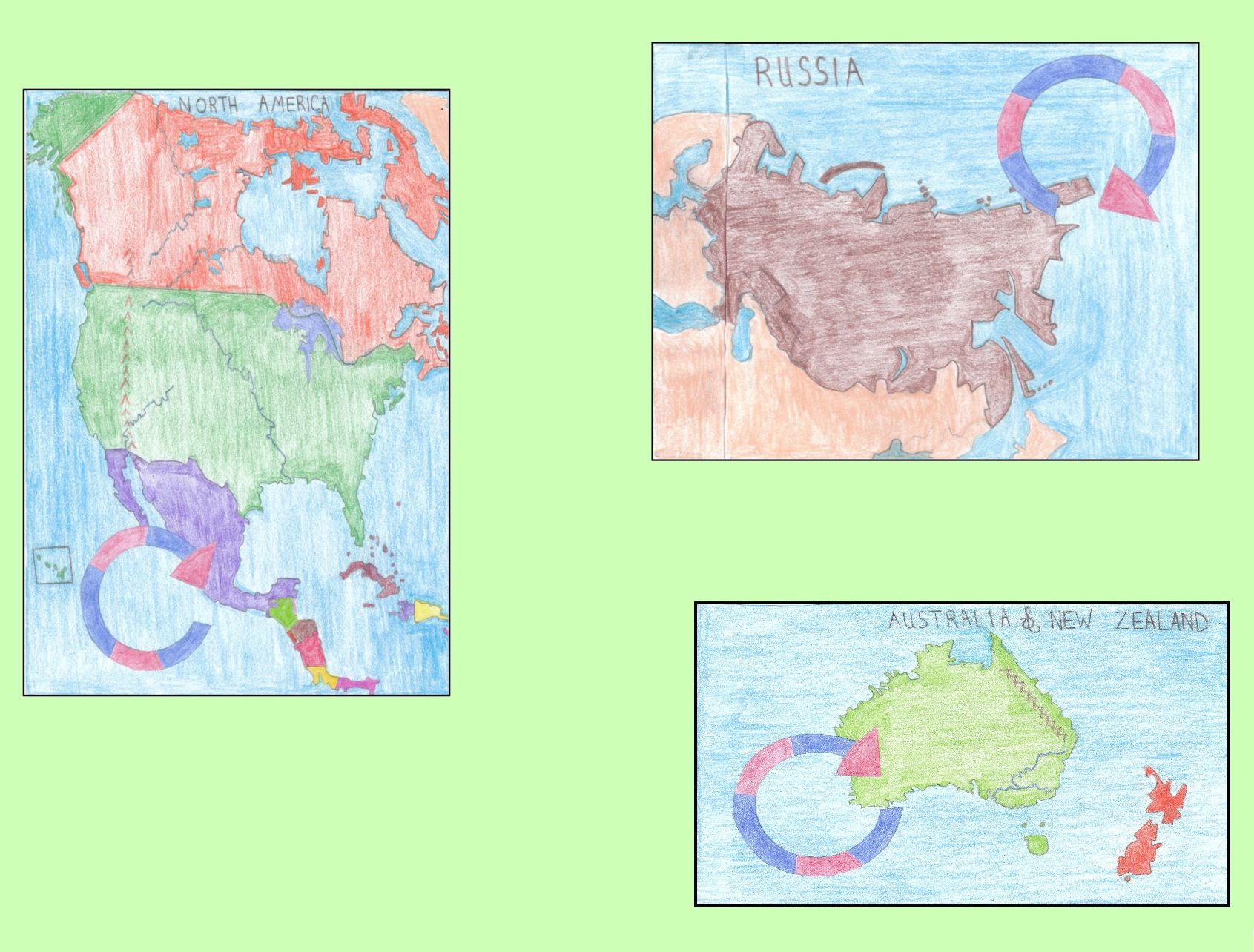 For the majority of commonly played card games this would consist of dealing in a clockwise direction, with the player to the dealers immediate left getting the first card or cards of the deal and the dealer, if an active participant in the game, receiving the last in each round of the deal. In the same way, the player to the dealers left would make the first play in the hand with play continuing in a clockwise direction. The dealer would be the last to play in each cycle of plays in the hand.
For the majority of commonly played card games this would consist of dealing in a clockwise direction, with the player to the dealers immediate left getting the first card or cards of the deal and the dealer, if an active participant in the game, receiving the last in each round of the deal. In the same way, the player to the dealers left would make the first play in the hand with play continuing in a clockwise direction. The dealer would be the last to play in each cycle of plays in the hand.
However, this can be different in some locales, where the order of both the deal and the order of play would be reversed, and thus would cycle in a counter-clockwise direction instead. As a general rule the deal and order of play is done in a clockwise direction in North America, Russia and Australia, while it is almost always done in the reverse, counterclockwise direction, in Asia and South America. In the European nations, it is generally divided between north and south. The northern European countries (such as France, Germany and Poland) generally deal and play in a clockwise direction while those in the southern portions of Europe (such as Spain, Switzerland and Turkey) do so in a counterclockwise direction.
 Oftentimes, the location of origin of a particular game will determine the order of play and card distribution for the game.
Thus the order and direction for a particular game would be in a specific direction, regardless of where played, and there are even some games in which the order of the deal and play may reverse between individual hands or during the course of play.
Oftentimes, the location of origin of a particular game will determine the order of play and card distribution for the game.
Thus the order and direction for a particular game would be in a specific direction, regardless of where played, and there are even some games in which the order of the deal and play may reverse between individual hands or during the course of play.
The particular direction of the deal and rotation of play should not really pose an issue as long as the deal and order of play are done in a consistent manner throughout the game.
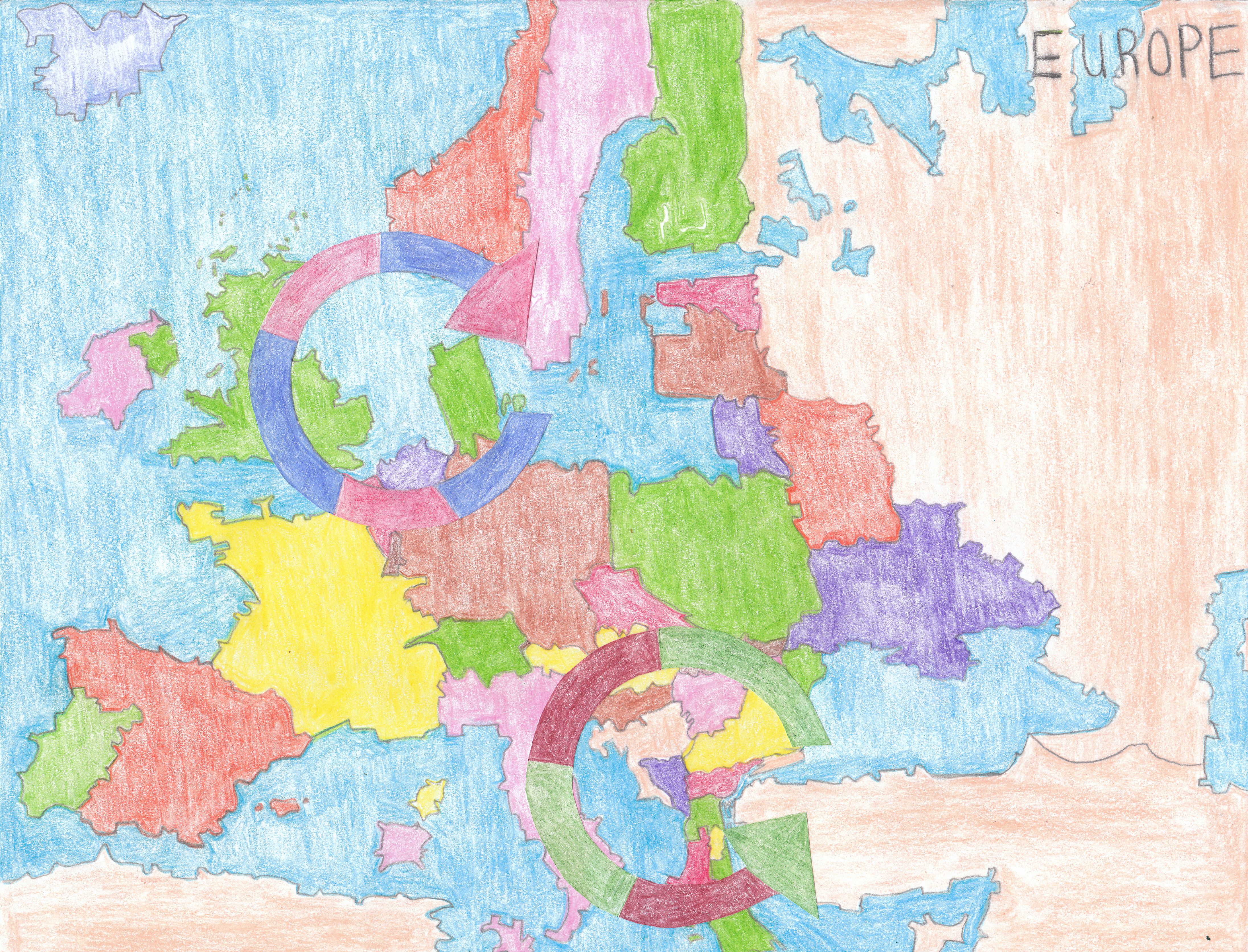 Also affected by the specific direction of the deal is the identity of the player who is offered the cut of the deck by the dealer. When using a clockwise direction, the player to the dealer's immediate right is usually offered the cut, however, if a counter-clockwise card distribution is being used, the player to the dealer's immediate left is offered the cut instead. Thus for the cut, the direction in which the dealer offers the cut is opposite than that used when distributing the cards to the players.
Also affected by the specific direction of the deal is the identity of the player who is offered the cut of the deck by the dealer. When using a clockwise direction, the player to the dealer's immediate right is usually offered the cut, however, if a counter-clockwise card distribution is being used, the player to the dealer's immediate left is offered the cut instead. Thus for the cut, the direction in which the dealer offers the cut is opposite than that used when distributing the cards to the players.
Rotation of the Deal Itself:
Another aspect in which this order and direction affect the game is in rotation of the identity of the dealing player between each game or hand. For most games, the dealer changes from hand to hand, although in some games, the dealer may remain the same throughout the entire game. However, the identity of the dealer usually rotates between each complete game. The order of the deal rotates in the exact same direction as the cycle of play used during the game. Thus, the deal may rotate in either a clockwise or counterclockwise wise direction around the table as described above. The player himself does not actually change seats, but instead simply passes the deck to the next player in turn who will then take the role of the dealer for the next hand or game.
The First Play:
In all games there are specific rules on who should be the first to receive the first card and who will make the first play of the hand. This would be the player either to the immediate left or right of the current dealer depending on the specific direction of play and distribution of cards. If you are using a clockwise direction, the first player to play in the hand would be the one sitting to the immediate left of the dealer and if a counter-clockwise direction is being used, it would be the player to the dealers immediate right. In most card vocabulary, this player is called the "Eldest Hand". If the dealer is an active participant in the game, he will be the last to receive his cards in each rotation and likewise will be the last to take his turn in each round of plays in the hand.
Variations of the Basic Deal:
You may find a wide variety of methods or techniques used when distributing the cards. However, the end result of these is always the same: The ordered dissemination of the proper number of cards to each current player in the hand.
- Left Handed Dealing: The basic deal was generally designed for a right handed person, so may seem a bit awkward for a left-handed individual when performing the deal. Thus, many players, who are left-handed, find that it more convenient and natural to deal "left handed". In this case the deck is held in the right hand, with all motions being opposite of those described above. Thus, the thumb of the right hand slides the card (or cards) off the deck and the cards are pitched or tossed using the left hand. This is generally accepted in most informal card games, however, left handed dealing may be forbidden in more formal games or groups. The actual direction of the distribution of the cards should not be changed regardless of which hand a player deals with, however.
- Multiple Card Packets: As mentioned previously, some games will require each player to receive more than the usual one card in each rotation of the card distribution. This will usually consist of a small bundle of cards passed to each player in rotation. These bundles usually consist of two, three or four face-down cards distributed at each rotation to each player. Thus, instead of receiving just one card from the top of the deck in each rotation, each player would receive a small packet of cards. For instance, in the game Euchre, each player would receive a three card packet and on the second round each player would receive a two card packet, for a total of a five card hand.
-
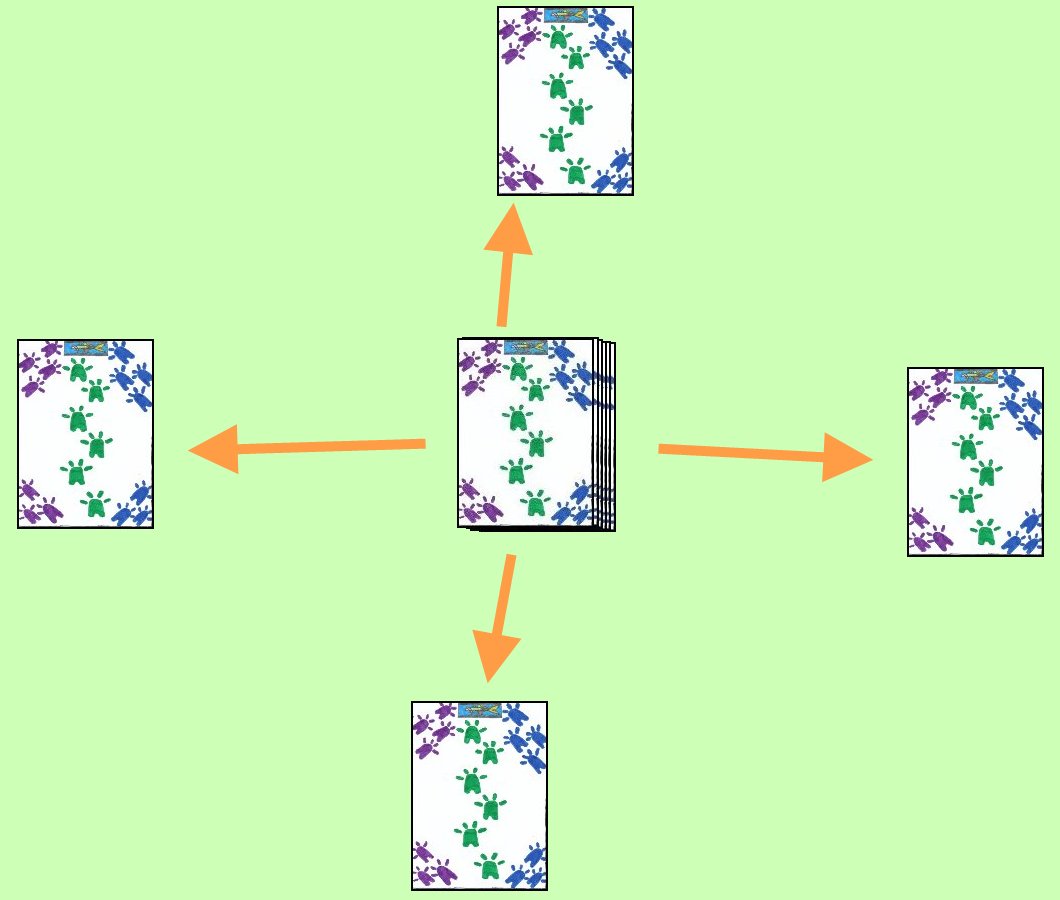 Deal Your Own: In some card games, particularly in many games that originated in China or other Asian countries, an alternative to the standard method of dealing can be found. In this method, no specific player actually deals the cards, but rather each player takes their own cards from the shuffled deck. It is usually performed as follows:
Deal Your Own: In some card games, particularly in many games that originated in China or other Asian countries, an alternative to the standard method of dealing can be found. In this method, no specific player actually deals the cards, but rather each player takes their own cards from the shuffled deck. It is usually performed as follows:
Any of the standard methods can be used to determine one player who will be called the first "Dealer", even though this individual does not actually pass out any cards to the other players. This player begins by shuffling the deck as normal. After shuffling, this player passes the deck to another player (usually the next person to his immediate left) who cuts the cards and hands it back to the "dealer". The dealer then places the deck face down in the center of the table in a neat stack. This dealer then draws the top card from the deck and adds it to his own hand, ensuring no other player but himself can see the face of the card. After this, the next player in counterclockwise direction from the dealer takes the new top card from the deck in the same way. This continues around the table until each player has the prescribed number of cards necessary for the game to be played. The player who plays first will be dependent on the game to be played, but often is the dealer, with the players turns proceeding around the table in a counterclockwise direction. Note that the direction of the deal and play may be reversed, depending on the local customs of the participants. - Dealer as a non-participant: In some games or in some groups of card players, the dealer may be acting solely as the dealer for the hand, but may not actually be an active participant in this specific hand. In that case, the dealer would deal in the standard fashion and would simply not distribute any cards to himself during the hand. Usually, the person who deals rotates in the normal manner, and thus all the players will have equal opportunities to deal and play in the hands.
Determining the first dealer and the players' seating positions:
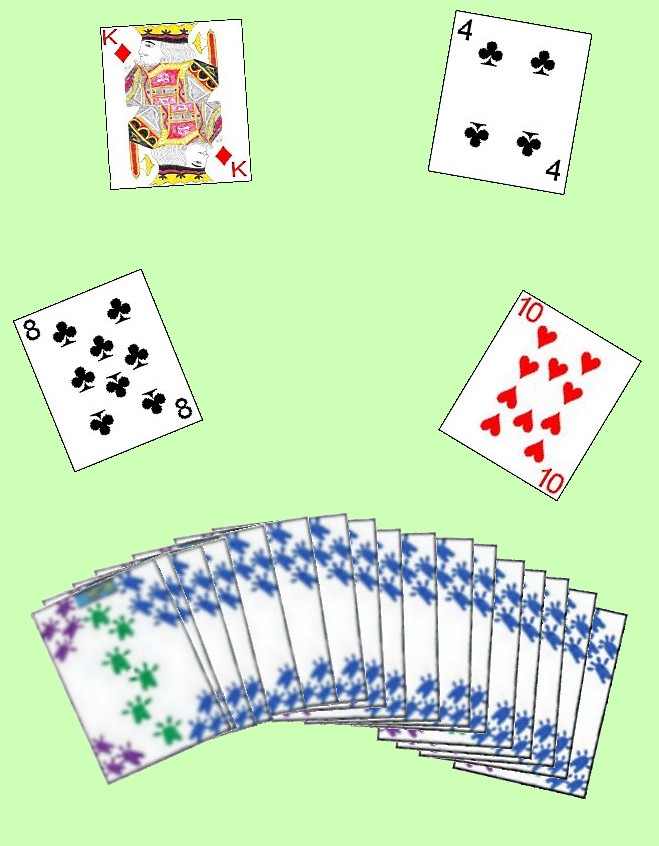 There are a number of different methods to determine the initial dealer and seating positions for the players.
These methods generally consist of players drawing or cutting for the lowest card (who would become the first dealer and take the first choice of seat at the table) or sometimes the cards are dealt out face up to each player (using the dealing direction determine by the locale) until a specific card is exposed.
See this article Determining the First Dealer for details on selecting this first dealer and specific methods on how to do this.
There are a number of different methods to determine the initial dealer and seating positions for the players.
These methods generally consist of players drawing or cutting for the lowest card (who would become the first dealer and take the first choice of seat at the table) or sometimes the cards are dealt out face up to each player (using the dealing direction determine by the locale) until a specific card is exposed.
See this article Determining the First Dealer for details on selecting this first dealer and specific methods on how to do this.
Whatever method is used, after the first hand is dealt and played, the deal should rotate around the table, although the players seating positions would not change during the course of the game. After any complete game, any player may call for a new determination for current dealer and seating positions, using the same procedures to determine new seating positions and first dealer.
Additional Information:
It should be noted that many games provide specific rules for the deal, direction of play and other similar aspects. In all cases, the rules as specified for that game should be used instead of any general rules when playing that particular game.
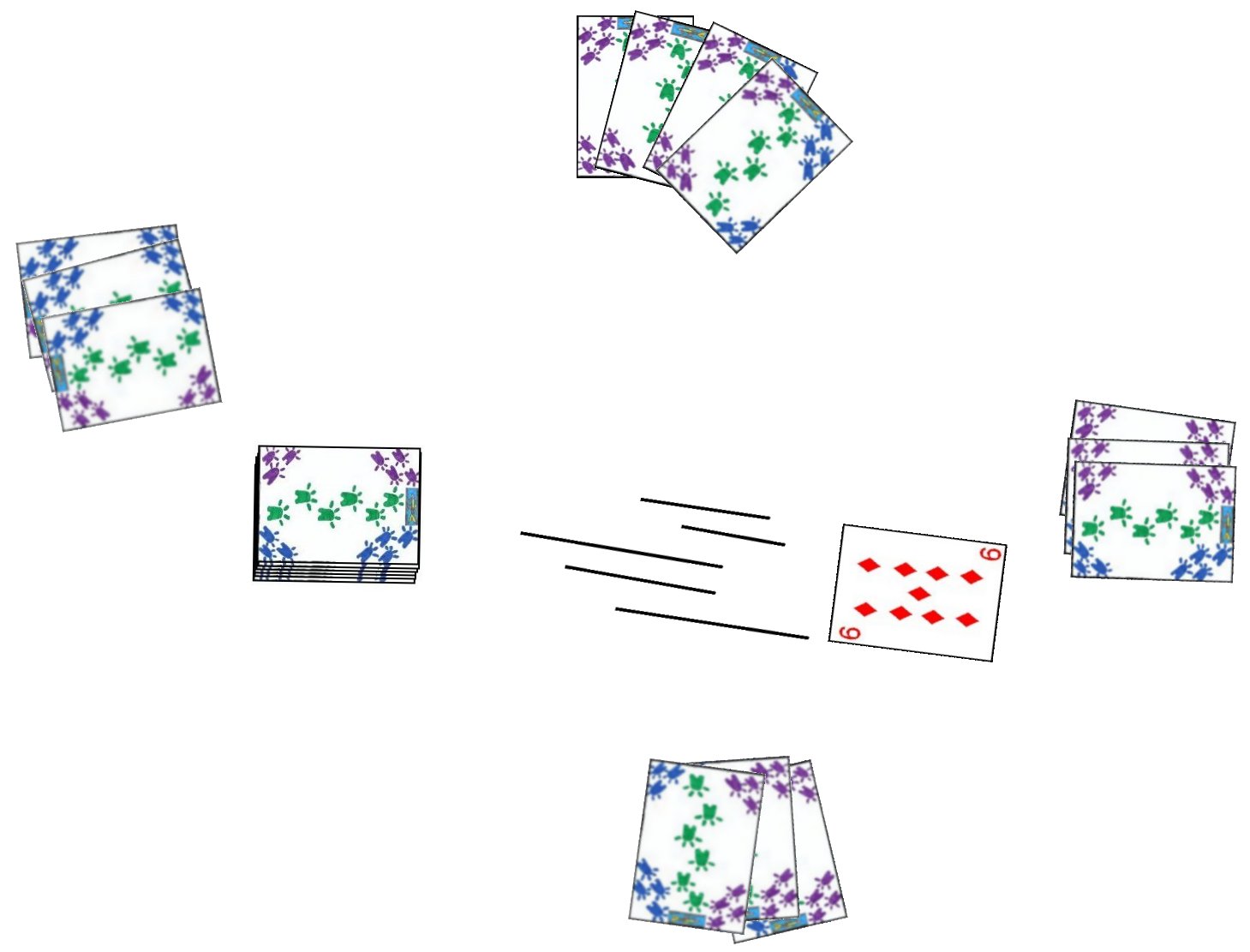 If, during the dealing procedure, any of the cards being dealt to a player are exposed (when they normally shouldn't be), this is an irregularity. If this happens, the player from which the cards were exposed may request all of the cards be thrown in, reshuffled cut and redealt. He is not obligated, however to request this, so, the deal may stand if he does not request such a redeal. If any community cards (not owned by any particular player) are exposed during the deal (which normally shouldn't be) there is an automatic reshuffle and deal, by the same dealer. However, if the dealer inadvertently exposes his own cards as part of the deal, the deal stands with no redeal performed.
If, during the dealing procedure, any of the cards being dealt to a player are exposed (when they normally shouldn't be), this is an irregularity. If this happens, the player from which the cards were exposed may request all of the cards be thrown in, reshuffled cut and redealt. He is not obligated, however to request this, so, the deal may stand if he does not request such a redeal. If any community cards (not owned by any particular player) are exposed during the deal (which normally shouldn't be) there is an automatic reshuffle and deal, by the same dealer. However, if the dealer inadvertently exposes his own cards as part of the deal, the deal stands with no redeal performed.